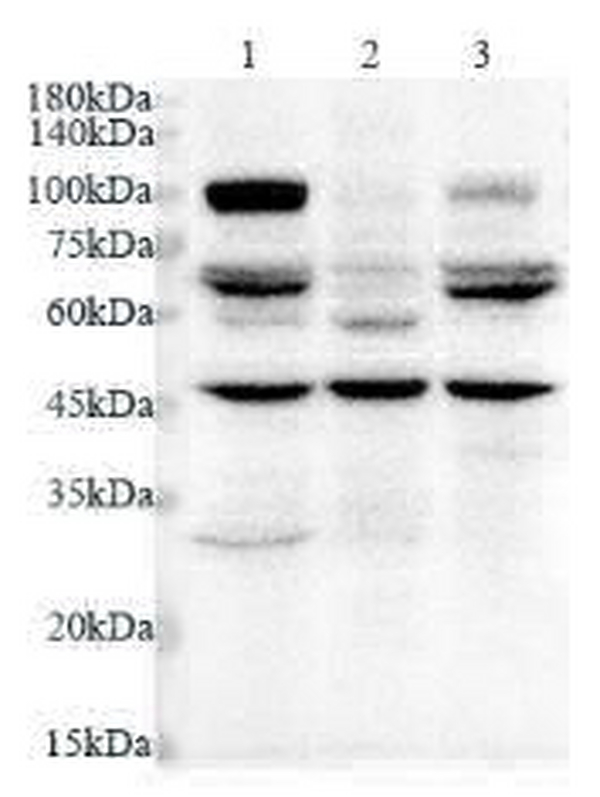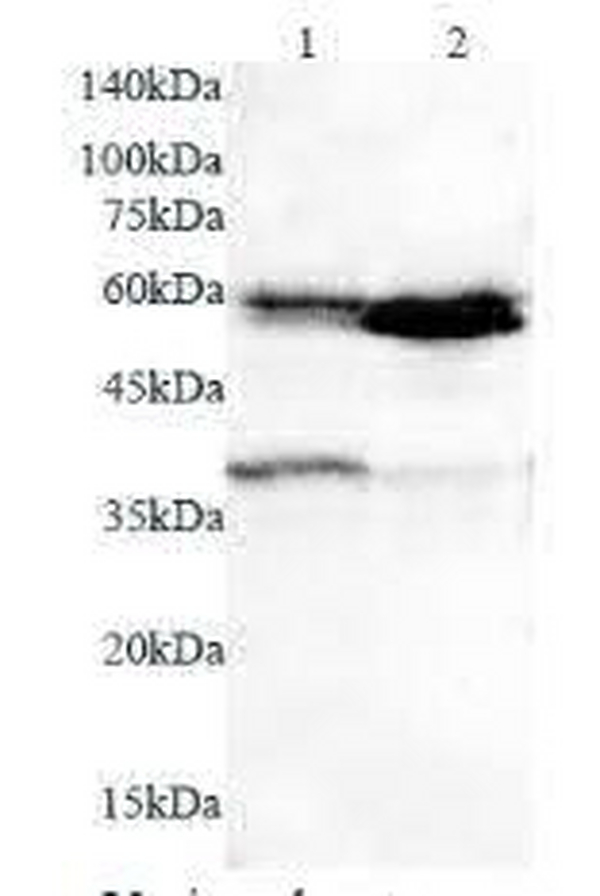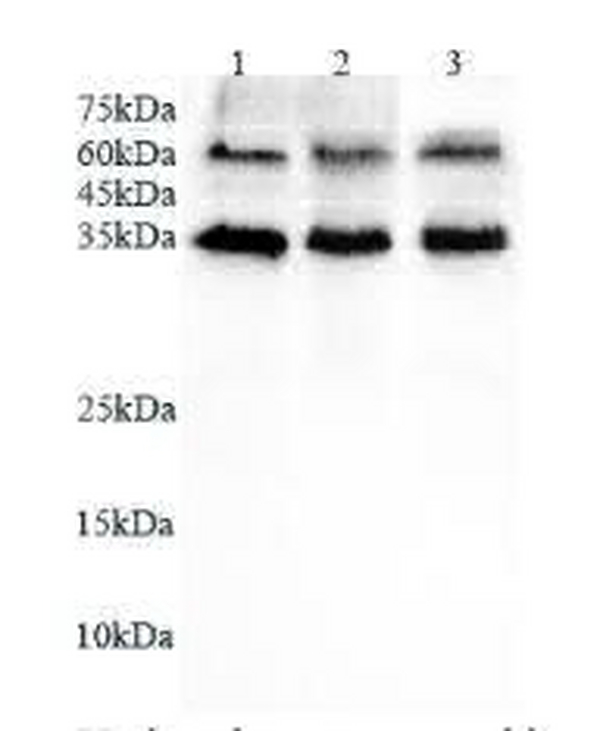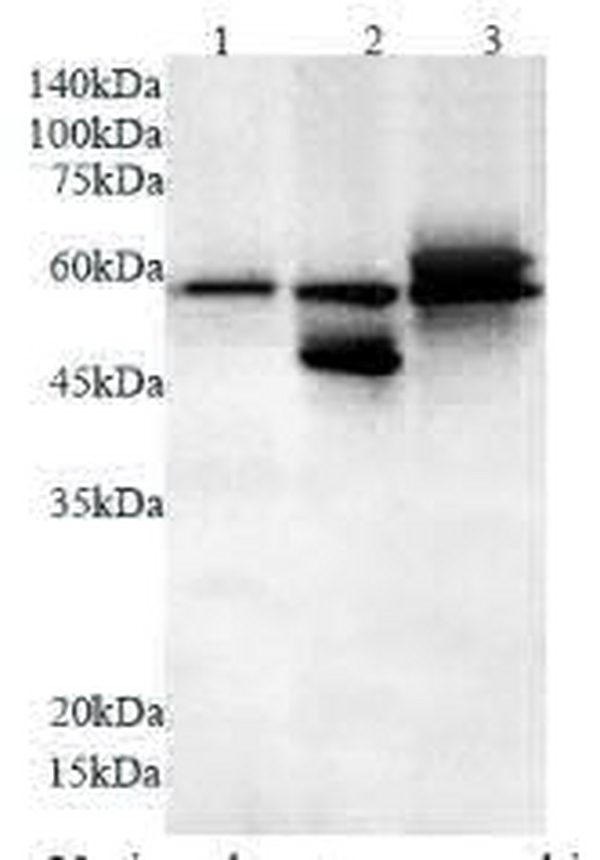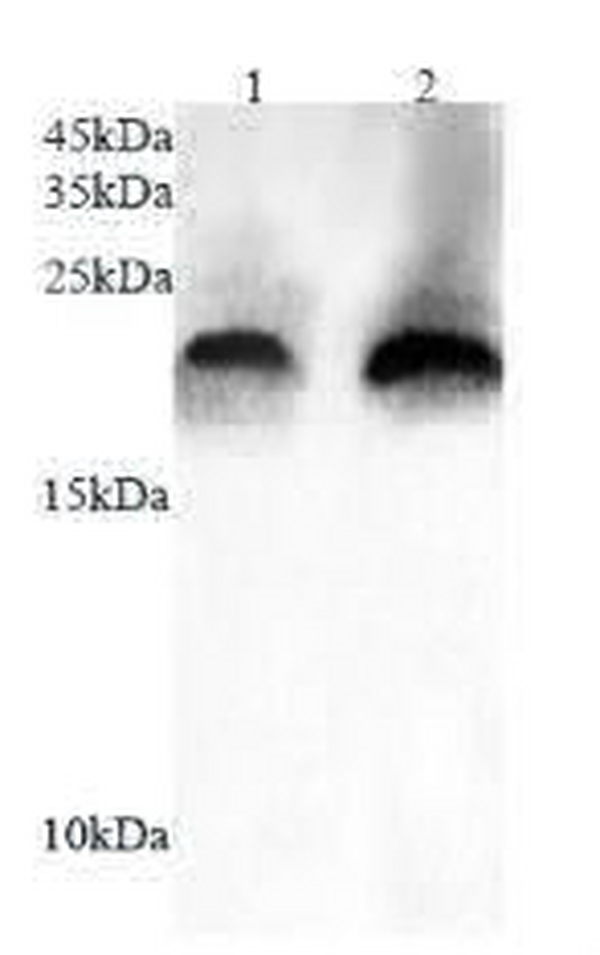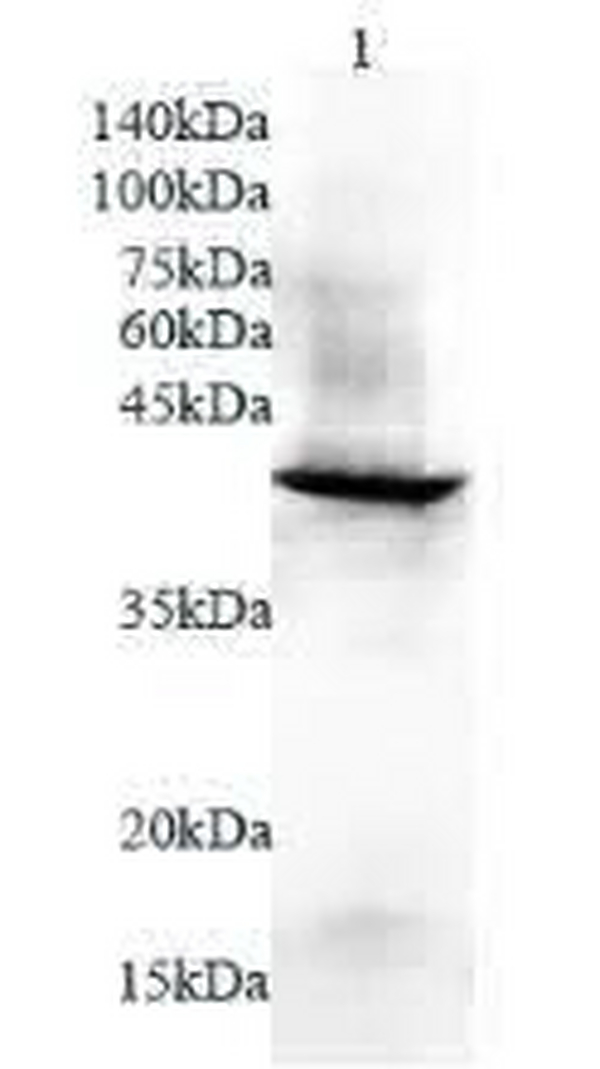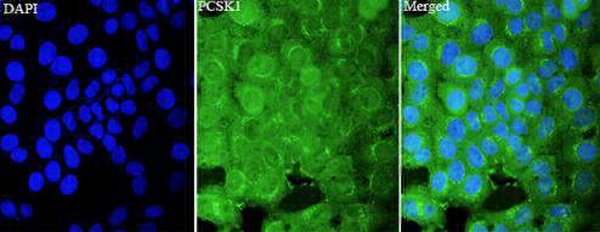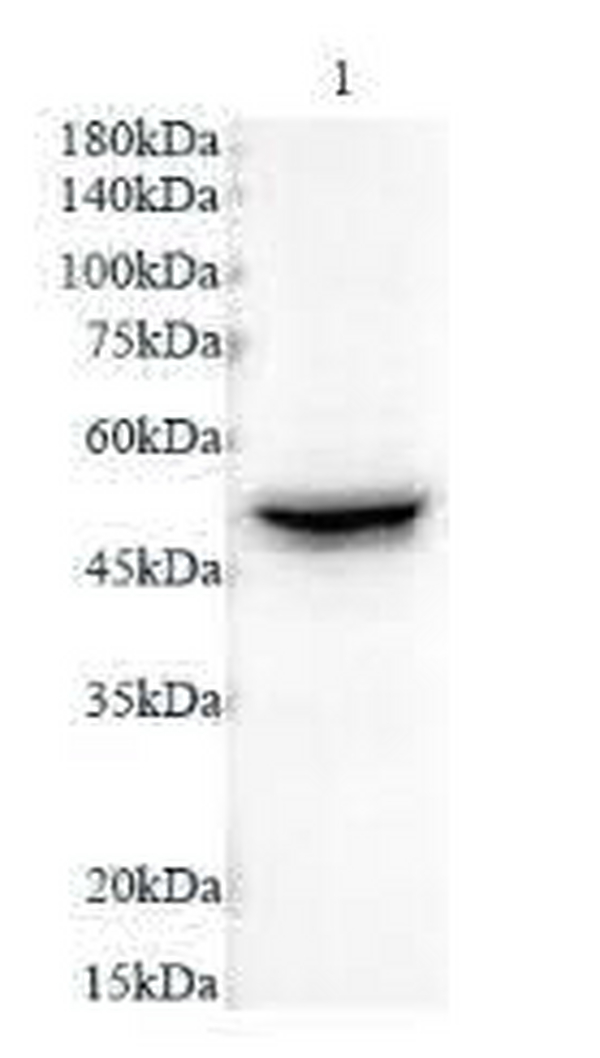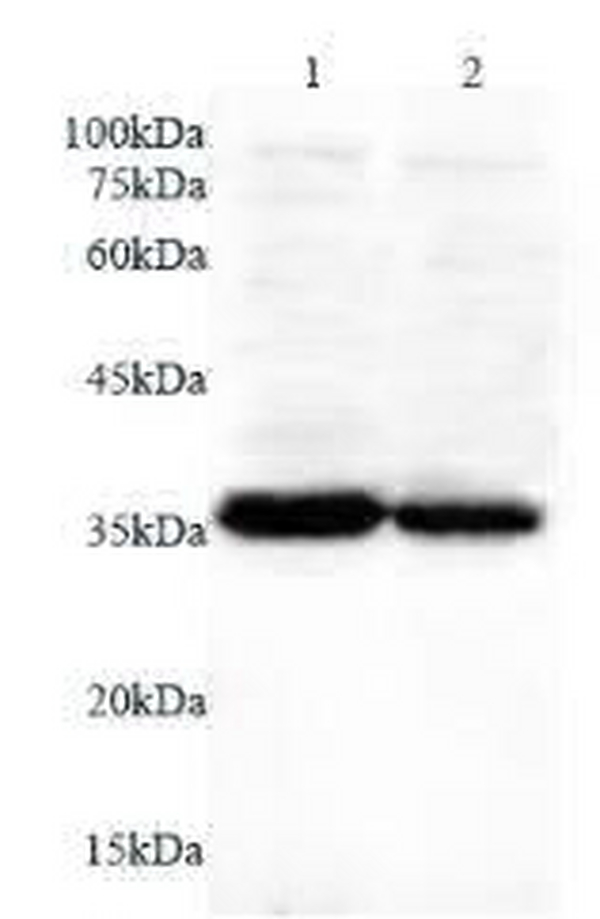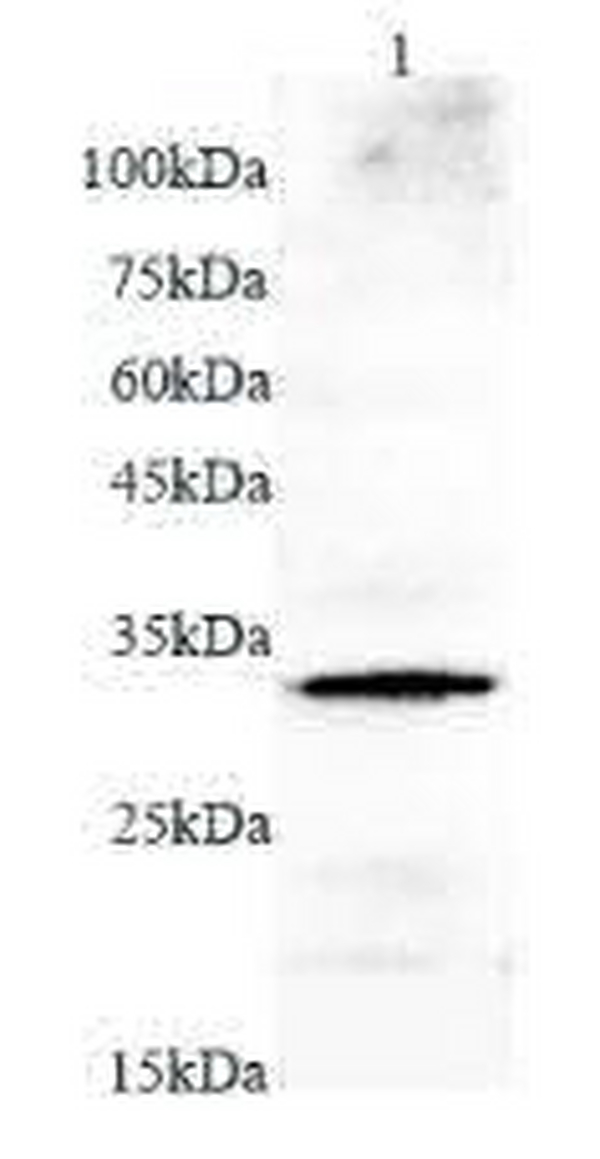QQ:3002763590


客服电话:021-61998208
Anti HDAC10 polyclonal antibody
HDAC10抗体
Anti HDAC10 polyclonal antibodyThe enzymes responsible for the reversible acetylation/ deacetylation process of histones are histone acetyltransferases (HATs) and histone deacetylases (HDACs), respectively. HATs act as transcriptional coactivators and HDACs are part of transcriptional corepressor complexes. Mammalian HDACs can be divided into three classes according to sequence homology. Class I consists of the yeast Rpd3 like proteins HDAC1, HDAC2, HDAC3, and HDAC8. Class II consists of the yeast Hda1 like proteins HDAC10, HDAC5, HDAC6, HDAC7, HDAC9, and HDAC10. Class III comprises the yeast Sir2 like proteins. Whereas class I HDACs are ubiquitously expressed, most class II HDACs are tissue specific. HDAC10 is similar to HDAC6, both containing a unique putative second catalytic domain not found in other HDACs. However, this domain is not functional in HDAC10. The deacetylase activity of class II HDACs is regulated by subcellular localization. HDAC10 was localized to both the nucleus a
Anti CD1c polyclonal antibody
CD1c抗体
Anti CD1c polyclonal antibodyThis gene encodes a member of the CD1 family of transmembrane glycoproteins, which are structurally related to the major histocompatibility complex (MHC) proteins and form heterodimers with beta-2-microglobulin. The CD1 proteins mediate the presentation of primarily lipid and glycolipid antigens of self or microbial origin to T cells. The human genome contains five CD1 family genes organized in a cluster on chromosome 1. The CD1 family members are thought to differ in their cellular localization and specificity for particular lipid ligands. The protein encoded by this gene is broadly distributed throughout the endocytic system via a tyrosine-based motif in the cytoplasmic tail. Alternatively spliced transcript variants of this gene have been observed, but their full-length nature is not known. [provided by RefSeq, Jul 2008]
Anti CD16b polyclonal antibody
CD16b抗体
Anti CD16b polyclonal antibodyCD16 is a 50-70-kDa low affinity Fc receptor found on the surface of natural killer cells, neutrophil polymorphonuclear leukocytes, monocytes and macrophages. CD16 mediates antibody-dependent cellular cytotoxicity (ADCC) and other antibody-dependent responses, such as phagocytosis. CD16 has been identified as Fc receptors FcγRIIIa (CD16a) and FcγRIIIb (CD16b), encoded by two nearly identical genes, FCGR3A and the FCGR3B.
Anti NEU1 polyclonal antibody
NEU1抗体
Anti NEU1 polyclonal antibodyNEU1 (lysosomal sialidase) encodes a kind of lysosomal enzyme that could cleave terminal silic acids from glycoproteins or glycolipids to regulate various biological processes by conformational change (PMID:28130415). In the lysosome, NEU1 is one member of a heterotrimeric complex, the others are beta-galactosidase and cathepsin A. The NEU1 is widely expressed in mammalian tissues and involved in lysosomal storage disorder sialidosis, autoimmune diseases and the malignancy and metastasis of cancer cells (PMID:19075514). NUE1 also expresses on the plasma membrane where it modulates several signalling molecules about inflamation, exocytosis, phagocytosis, cell adhesion and proliferation (PMID:21928149). Addition, it is reported that mutation in NEU1 of human could lead to sialidosis (PMID:14517945).
Anti SUMO2 polyclonal antibody
SUMO2抗体
Anti SUMO2 polyclonal antibodyUbiquitin is most famous for its function in targeting proteins for degradation by the 26S proteasome, ubiquitin needs to be attached to a substrate in chains (polyubiquitylation) before being recognized by proteasome. Similarly, SUMO (small ubiquitin-related modifier) can be linked to substrates in chains (polysumoylation), SUMO modification has been implicated in many important cellular processes including the control of genome stability, signal transduction, targeting to and formation of nuclear compartments, cell cycle and meiosis. There are 4 confirmed SUMO isoforms in human, SUMO-1, SUMO-2, SUMO-3 and SUMO-4. SUMO-2 and SUMO-3 are nearly identical but are distinct from SUMO-1. SUMO2/3 conjugation was recently widely involved in neuroprotective activities. A substitution (M55V) of SUMO4 was strongly associated with the pathogenesis of type 1 diabetes (T1D) involving NF kappa B related mechanisms.
Anti TMEM173 polyclonal antibody
TMEM173抗体
Anti TMEM173 polyclonal antibodyTMEM173, also named as ERIS, MITA, STING and MPYS, is a facilitator of innate immune signaling that promotes the production of type I interferon (IFN-alpha and IFN-beta). TMEM173 mediates death signaling via activation of the extracellular signal-regulated kinase (ERK) pathway. There’re monomer (35-40 kDa)(PMID: 27324217,29632140;30918080) and dimer (80 kDa) form of TMEM173 in western blot test.
Anti PCSK1 polyclonal antibody
PCSK1抗体
Anti PCSK1 polyclonal antibodyThis gene encodes a member of the subtilisin-like proprotein convertase family, which includes proteases that process protein and peptide precursors trafficking through regulated or constitutive branches of the secretory pathway. The encoded protein undergoes an initial autocatalytic processing event in the ER to generate a heterodimer which exits the ER and sorts to subcellular compartments where a second autocatalytic even takes place and the catalytic activity is acquired. The protease is packaged into and activated in dense core secretory granules and expressed in the neuroendocrine system and brain. This gene encodes one of the seven basic amino acid-specific members which cleave their substrates at single or paired basic residues. It functions in the proteolytic activation of polypeptide hormones and neuropeptides precursors. Mutations in this gene have been associated with susceptibility to obesity and proprotein convertase 1/3 deficiency. Alternati
Anti CK-8 polyclonal antibody
CK-8抗体
Anti CK-8 polyclonal antibodyKeratins are a large family of proteins that form the intermediate filament cytoskeleton of epithelial cells, which are classified into two major sequence types. Type I keratins are a group of acidic intermediate filament proteins, including K9–K23, and the hair keratins Ha1–Ha8. Type II keratins are the basic or neutral courterparts to the acidic type I keratins, including K1–K8, and the hair keratins, Hb1–Hb6. KRT8 is often paired with keratin 18 in vivo. This antibody is specifically against KRT8.
Anti ANXA5 polyclonal antibody
ANXA5抗体
Anti ANXA5 polyclonal antibodyAnnexin A5 (ANXA5), is a member of the structurally related family of annexin proteins some of which have been implicated in membrane-related events along exocytotic and endocytotic pathways. Annexin 5 is a phospholipase A2 and protein kinase C inhibitory protein with calcium channel activity and a potential role in cellular signal transduction, inflammation, growth and differentiation. Annexin 5 has also been described as placental anticoagulant protein I, vascular anticoagulant-alpha, endonexin II, lipocortin V, placental protein 4 and anchorin CII.
Anti MMP7 polyclonal antibody
MMP7抗体
Anti MMP7 polyclonal antibodyMatrix metalloproteinase-7 (MMP-7)/ matrilysin is a member of the MMP family, but is structurally different from the other MMPs by virtue of the absence of a conserved COOH-terminal protein domain. MMPs are involved in the breakdown of extracellular matrix in normal physiological processes, such as embryonic development reproduction, and tissue remodeling, as well as in disease processes, such as arthritis and cancer metastasis. Most MMP's are secreted as inactive proproteins which are activated when cleaved by extracellular proteinases. MMP-7 degrades proteoglycans, fibronectin, elastin and casein, and is involved in wound healing, tumor progression, pulmonary fibrosis, and development of choroidal neovascularization in age-related macular degeneration. The expression of MMP-7 is increased in most tumors. This antibody can only recognize the full-length of MMP7.
最新动态
-
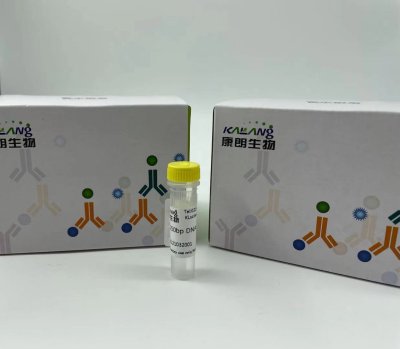
Anti-GNGT1 KL20092-001(50ul)
2021-10-11 -

Anti-GNGT1 antibody(50ul) KL20093-001
2021-10-11 -
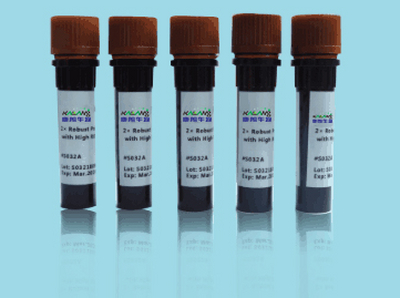
MUC5AC (PT2058) mouse Monoclonal Antibody
2021-01-06 -

mOrange mouse Monoclonal Antibody(Mix)
2021-01-05
热门标签
- Histone H3 rabbit Polyclonal Antibody Histone H3抗体
- EGFR rabbit Polyclonal Antibody EGFR抗体
- Cy3 Conjugated
- AbFluor™ 555 Conjugated
- AbFluor™ 680 Conjugated
- AbFluor™ 350 Conjugated
- AbFluor™ 647 Conjugated
- AbFluor™ 594 Conjugated
- AbFluor™ 405 Conjugated
- Cy5 Conjugated
- AbFluor™ 488 Conjugated
- Cyclophilin B抗体 Cyclophilin B Monoclonal Antibody(2B10)
- COX IV抗体 COX IV Monoclonal Antibody(6C8)
- PCNA抗体 PCNA Monoclonal Antibody(12D10)
- FAK rabbit Polyclonal Antibody FAK抗体
邮箱:3002763590@qq.com
电话:021-61998208

扫码关注微信公众号



